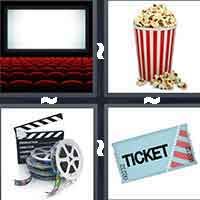

Stevens and his colleagues used AC (sinusoidal) electric stimulation to identify three mechanisms underlying the “electrophonic perception” in the 1930s. Recognizing the danger of DC stimulation and armed with vacuum-tube-based oscillators and amplifiers, Harvard researchers S.S. Over the next 150 years, a few brave ones repeated Volta’s heroic experiment and all obtained the same disagreeable sensation as a result of the direct current (DC) stimulation.
#4 pics 1 word clock camera sound board graph how to#
For example, Bell Labs’ vocoders that describe how to break up and then reassemble speech have been absolutely critical to the development of signal processing in modern cochlear implant systems. Although it is hard to tell whether Bell had envisioned it, there is no question that Bell’s enterprise, the Research Laboratories of the Bell Telephone System, conducted early comprehensive research in hearing and speech that forms the theoretical foundation needed for later success of the cochlear implant. Bell used the prize to help hearing-impaired people including his deaf wife and Heller Keller, who devoted her first book “ The story of my life” to him. In 1880, the most notable Volta prize went to Alexander Graham Bell (1847-1922) who received 50,000 francs for his invention of the telephone. In addition, Napoleon made him a Count and established the annual Volta prize. In honor of Volta’s work in electricity, an important electrical unit, the volt (V), was named after him. The unpleasant sensation was likely the first demonstration that electric stimulation, instead of sound and light, can induce auditory and visual sensations. The journey started with a “crackling and boiling” sensation, when the Italian scientist Alessandro Volta (1745-1827) placed the two ends of a 50-volt battery to his ears more than two centuries ago. The commercialization phase saw a wide spread use of electric stimulation in treating sensorineural hearing loss. The research and development phase legitimized the utility and safety of electric stimulation. The conceptualization phases demonstrated the feasibility of electric stimulation. Three phases defining the major events in the development of cochlear implants. Finally, issues beyond cochlear implants are discussed to address treatment options for the entire spectrum of hearing impairment as well as to use the cochlear implant as a model to design and evaluate other similar neural prostheses such as vestibular and retinal implants. Third, system integration and functional evaluation are presented with respect to safety, reliability, and challenges facing the present and future cochlear implant designers and users. Second, the design goals, principles, and methods of the subsystem components are identified from the external speech processor and radio frequency transmission link to the internal receiver, stimulator and electrode arrays. First, the cochlear implant system design and specifications are laid out. The review takes a system approach to address critical issues from design and specifications to integration and evaluation. The introduction accounts for major events and advances in cochlear implants, including dynamic interplays among engineers, scientists, physicians, and policy makers. This review presents broad yet in-depth academic and industrial perspectives on the underlying research and ongoing development of cochlear implants. Biomedical engineers have played a central role in the design, integration and evaluation of the cochlear implant system, but the overall success is a result of collaborative work with physiologists, psychologists, physicians, educators, and entrepreneurs. As the most successful neural prosthesis, cochlear implants have provided partial hearing to more than 120,000 persons worldwide half of which being pediatric users who are able to develop nearly normal language.


 0 kommentar(er)
0 kommentar(er)
